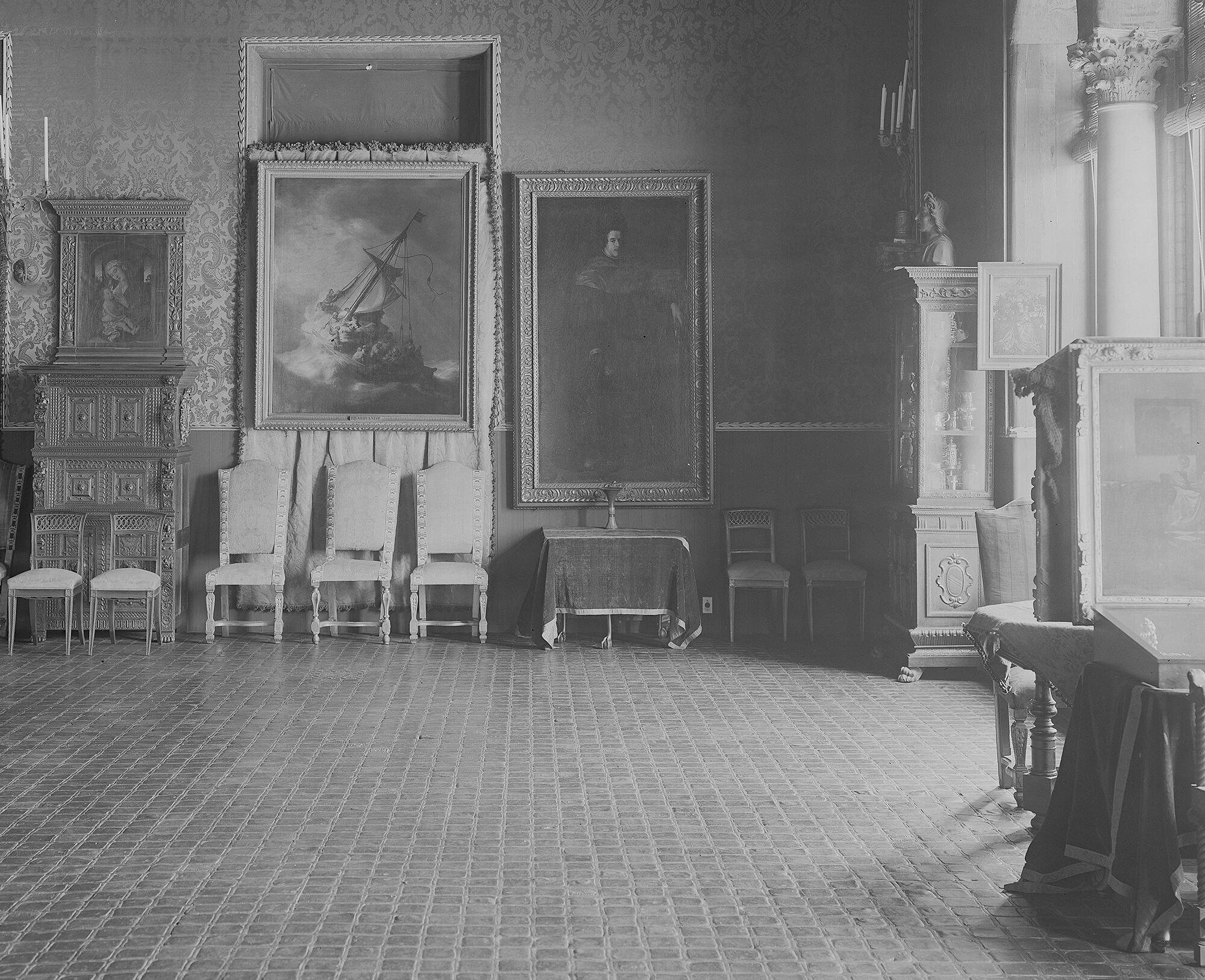In the early hours of March 18, 1990, 13 works of art were stolen from the Isabella Stewart Gardner Museum - the single largest property theft that remains unsolved.
The Missing Gu
Among the stolen works was one Chinese bronze vessel, a gu. Though much has been written about the stolen paintings, the missing gu is also a valuable part of the collection. This blog post provides resources for those who want to learn about its significance. Early bronze vessels, such as the gu, help us explore aspects of the art and technology of China’s Bronze Age. Additionally, the fact that Isabella Stewart Gardner (1840–1924) collected Chinese art is not very well known. The gu that Isabella collected elucidates some of her connections to other Asian art collectors in the early 1900s

Isabella Stewart Gardner Museum, Boston (M21s29). Stolen in 1990.
Chinese, Gu, 12th century BCE. Bronze, 26.5 x 15.6 cm (10 7/16 x 6 1/8 in.)
A gu is a type of vessel that is taller than it is wide, with a mouth that flares outward and narrows through the body, before flaring out at the foot once more. Before the theft in 1990, specialists studied the Gardner Museum’s gu and dated it to the Shang Dynasty (around 1600–1050 BCE). The Shang period is interesting because metallurgists and metalworkers developed the technology to cast objects in bronze, an alloy composed mostly of copper and tin. They used a complex casting process, which today we call the piece-mold casting technique, to cast a range of objects including bronze vessels. Scholars believe that these bronze vessels were used to hold offerings, like drink or food, in rituals. Some of the most famous Shang bronze vessels that we know about today were interred in royal tombs in Anyang, a Shang capital, around 1250–1050 BCE.
The gu at the Gardner Museum also tells us about Isabella’s place in the history of collecting Asian art in America. The piece came on the market in 1922 from the collection of the art dealer Mr. Parish-Watson (1879-1941), of Parish-Watson & Co. As described in the Parish-Watson catalogue written with Berthold Laufer (1874–1934), the gu was not excavated in a formal archaeological excavation. Instead, the authors describe a well in China’s Hubei province where the gu was supposedly found.1 They also write that the bronzes described in the catalogue came to Parish-Watson through Herman A. E. Jaehne.2 Herman and his brother Paul C. Jaehne, active in New York, also collected Asian art and you can see some of that collection today at the Newark Museum of Art.

Isabella Stewart Gardner Museum, Boston (Marr24232, detail)
Arthur E. Marr (American, 1877–1954), The Dutch Room, Isabella Stewart Gardner Museum, 1926. The gu is visible on the table in front of Francisco de Zurbarán’s painting, A Doctor of Law.
Isabella purchased the gu on December 14, 1922 through her friend and fellow collector of Asian art, Denman W. Ross (1853–1935). It is interesting that she installed the vessel in the Dutch Room, rather than in her “Chinese Room” off of the Chinese Loggia. Today, the gu would be an incredible object for Gardner Museum visitors to learn about the history of bronzes in China and the collecting history of early bronzes in the United States.
We remain hopeful that it will one day be returned.
You May Also Like

Read More on the Blog
Isabella’s Journey with Chinese Art

Learn More
The Theft

Read More on the Blog
Traces of Decoration on a Chinese Mirror-Black Vase
Resources for further reading:
Dr. Cortney E. Chaffin, "War and Sacrifice: The Tomb of Fu Hao," in Smarthistory, August 5, 2021, https://smarthistory.org/tomb-of-fu-hao/.
Department of Asian Art. “Shang and Zhou Dynasties: The Bronze Age of China.” In Heilbrunn Timeline of Art History. New York: The Metropolitan Museum of Art, 2000–. http://www.metmuseum.org/toah/hd/shzh/hd_shzh.htm (October 2004)
National Museum of Asian Art, Smithsonian Institution, "Shang dynasty (c. 1600–1050 B.C.E.), an introduction," in Smarthistory, April 6, 2021, https://smarthistory.org/shang-dynasty-introduction/.
M. Parish-Watson and Berthold Laufer. Archaic Chinese bronzes of the Shang, Chou and Han periods in the collections of Mr. Parish-Watson, accompanied by notes of Berthold Laufer. New York: Parish-Watson, 1922.
Keith Wilson, Curator of Ancient Chinese art, National Museum of Asian Art, Smithsonian and Dr. Beth Harris, "Tigers, dragons, and monsters on a Shang Dynasty Ewer," in Smarthistory, May 12, 2021, https://smarthistory.org/shang-dynasty-bronze-ewer/.
Notes
1 M. Parish-Watson and Berthold Laufer. Archaic Chinese bronzes of the Shang, Chou and Han periods in the collections of Mr. Parish-Watson, accompanied by notes of Berthold Laufer. New York: Parish-Watson, 1922. See pages 9-11.
2Ibid